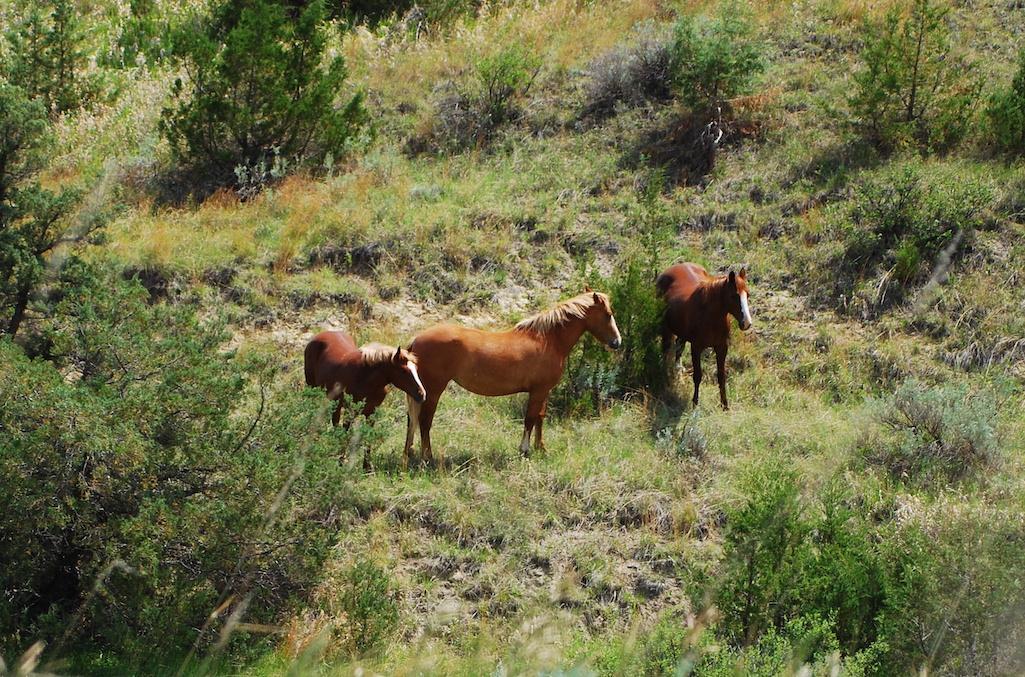
The National Park Service is being urged by Congress to keep wild horses at Theodore Roosevelt National Park/Kurt Repanshek file
A U.S. senator from North Dakota, in language attached to the legislation that funds the Interior Department for the rest of the year, is urging the National Park Service to keep wild horses at Theodore Roosevelt National Park.
The Committee understands the Service is undertaking a planning process to determine the appropriate way to manage livestock within the park. Options include continuing to follow the 1970’s [sic] management plans for the park, which accommodate keeping a limited number of livestock on the land. As this process continues, the Committee urges the Service to consider maintaining the historic scene commensurate with the historic herds during the period when President Theodore Roosevelt was a rancher in the area.
While language doesn't identify Sen. John Hoeven, R-North Dakota, as the author, on his website the senator says the "language directs NPS to maintain 'the historic scene commensurate with the historic herds during the period when President Theodore Roosevelt was a rancher in the area.'"
The political push comes as the National Park Service continues work on a plan for managing livestock — wild horses and longhorn cattle — at Theodore Roosevelt. The agency has proposed removing the fewer than a dozen cattle and about 200 feral horses from the park located in western North Dakota. It's been a controversial proposal that generated omre than 25,500 comments. (You can find a document that summarizes the comments at this park site.) A petition drive asking the Park Service to keep the horses has generated more than 60,000 signatures.
The park hasn't updated its horse management plan since 1978, and its cattle management plan dates to 1970. At issue is whether there should be any change in how the livestock are managed, whether the horses that roam the South Unit and the cattle in the North Unit should be removed as soon as possible, or whether the cattle should be removed and the horse herd reduced in number to a number of "fully contracepted horses" that would be allowed to live out their lives in the park.
While those who want horses to remain in the park view them as vestiges of the West that Roosevelt explored in the late 19th century, the Park Service has pointed out that genetic testing "indicates that the horses in the Park today show no clear ancestral relationship to any one breed, but have the strongest genetic influence from draft breeds and not horses of Spanish origin."
Regarding the longhorn cattle that roam the park's North Unit, the Park Service has pointed out that cattle contract Mycoplasma bovis, a bacterial disease that can be deadly to bison, and that's one reason that would justify their removal.



Add comment